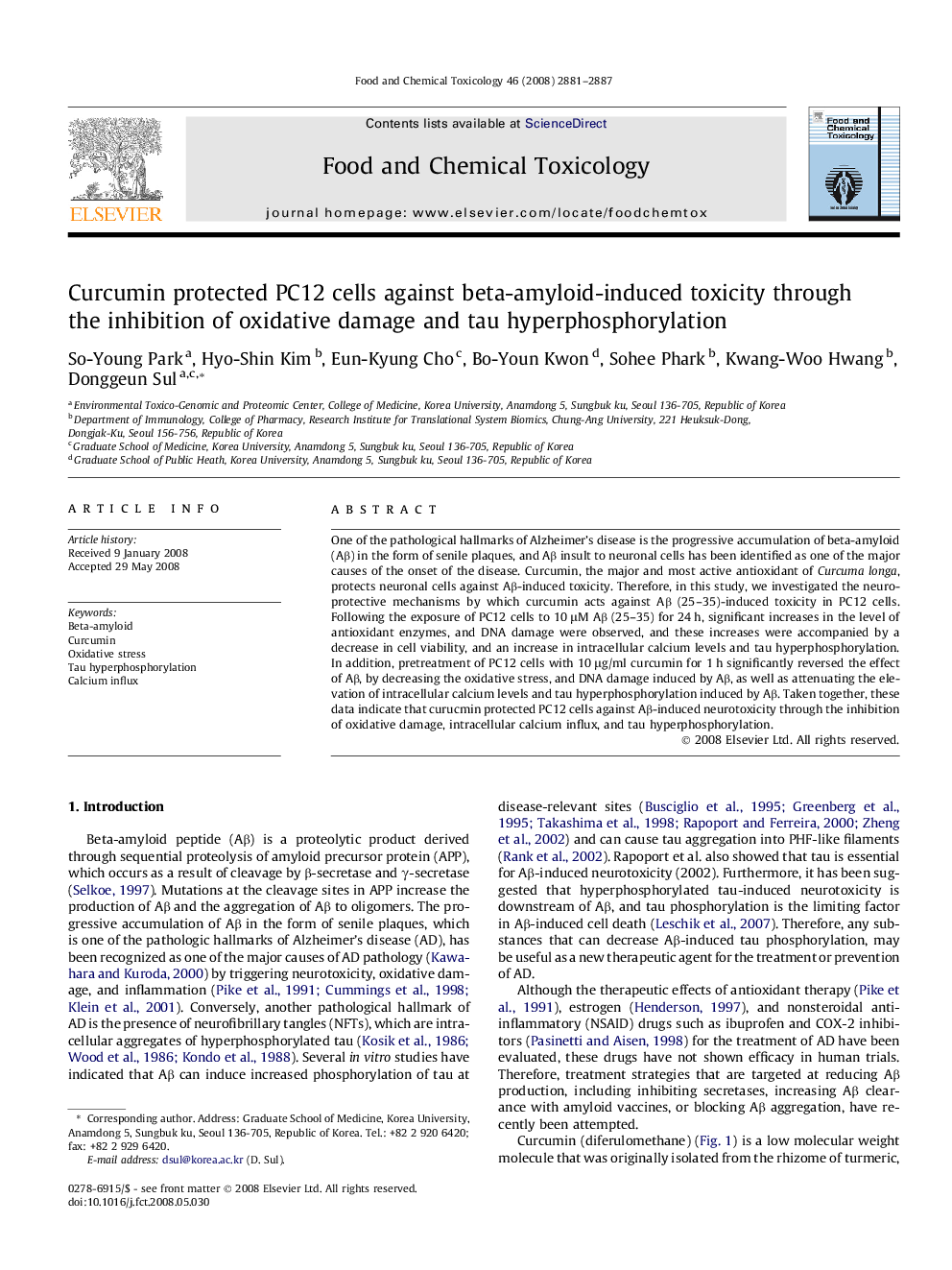| Article ID | Journal | Published Year | Pages | File Type |
|---|---|---|---|---|
| 2587183 | Food and Chemical Toxicology | 2008 | 7 Pages |
One of the pathological hallmarks of Alzheimer’s disease is the progressive accumulation of beta-amyloid (Aβ) in the form of senile plaques, and Aβ insult to neuronal cells has been identified as one of the major causes of the onset of the disease. Curcumin, the major and most active antioxidant of Curcuma longa, protects neuronal cells against Aβ-induced toxicity. Therefore, in this study, we investigated the neuroprotective mechanisms by which curcumin acts against Aβ (25–35)-induced toxicity in PC12 cells. Following the exposure of PC12 cells to 10 μM Aβ (25–35) for 24 h, significant increases in the level of antioxidant enzymes, and DNA damage were observed, and these increases were accompanied by a decrease in cell viability, and an increase in intracellular calcium levels and tau hyperphosphorylation. In addition, pretreatment of PC12 cells with 10 μg/ml curcumin for 1 h significantly reversed the effect of Aβ, by decreasing the oxidative stress, and DNA damage induced by Aβ, as well as attenuating the elevation of intracellular calcium levels and tau hyperphosphorylation induced by Aβ. Taken together, these data indicate that curucmin protected PC12 cells against Aβ-induced neurotoxicity through the inhibition of oxidative damage, intracellular calcium influx, and tau hyperphosphorylation.
